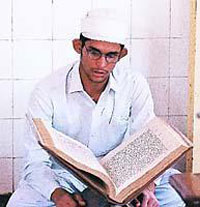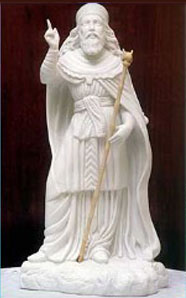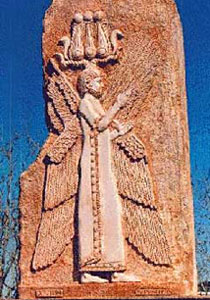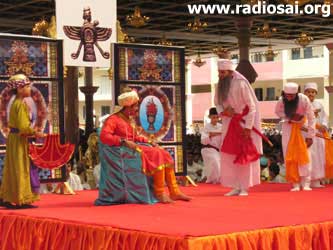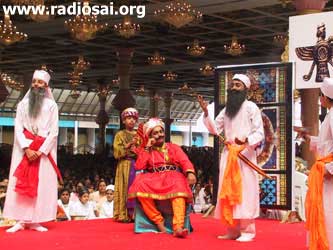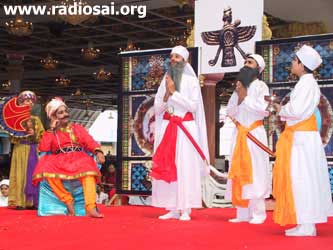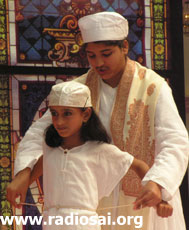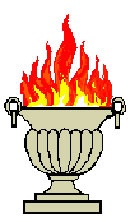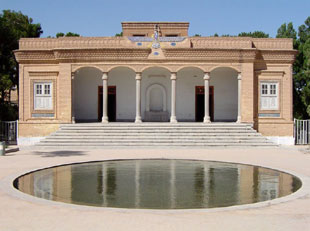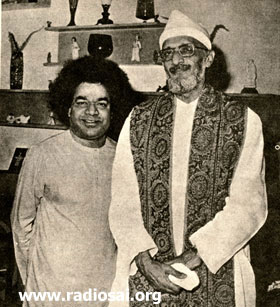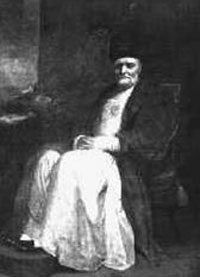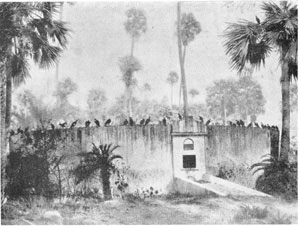PREAMBLE
In the June issue of H2H, we had a cover story on the fascinating religion and teachings of Buddhism. In continuance of our endeavour to present you with articles on the great religions of the world, we have a comprehensive cover story on Zoroastrianism, one of the ancient and important religions of the human race in this issue. Today, the followers of this great religion might have dwindled in numbers, but historically Zoroastrianism has not only held wide sway but also influenced many religions that came after it.
We spent a considerable amount of time researching for this feature and consulted many sources of information, besides many books. It turned out that while historical details were often scant, information about the philosophy and the theology of this ancient religion were more easily accessible. This uneven balance between history and theology would be reflected in what we present!
H2H has taken every possible care in preparing this article to celebrate the birthday of Zarathustra which falls in this month and we trust it is free of inaccuracies and misrepresentations. Errors present, if any, are unintentional and we trust we would be forgiven for the same!
We hope you like this article and would welcome your comments on it.
GENERAL INTRODUCTION
Thousands of years ago, there lived in the Northern Asian Valleys, a race of people called the Aryans. The word ‘Aryan’ means noble in character. In course of time, this Indo-European stock divided into two major sections. One went west to Europe while the other group drifted east. The eastern group itself split into two, one settling in what is now Iran while the other entered the Indian plains to settle there. In the language of those times, modern Iran or Persia was known as Aryanam Vaego, which means Land of the Aryans. The name Iran is derived from this original name. Interestingly, the Aryans who settled in what we know as India also gave a similar name to their new homeland – Arya Varta, meaning land of the Aryans.
As everyone knows, in olden times, Iran used to be known as Persia. The name Persia comes from a region in the south called Fars or Pars in the Persian language. Persis is the Greek form of Pars, based on which other European nations referred to it as Persia. The Greek writer Eratosthenes, however, refers to this region as Iran in his writings. This means that the name Iran goes back a long time.
This region was the core of all great Persian Empires. In 1935, at the specific request of the then King of Persia, the international community agreed to call this country Iran.
The religion followed by the ancient settlers in Persia was known as Mazdasyani Din. Din means faith, while Mazdasyani means the Worship of One Creator.
The Aryans who came to Persia encountered many tribes already established there. Naturally there were clashes, especially because these aboriginal tribes worshipped many gods. Eventually, the Aryans overcame the local tribes and established their hegemony. |
|
|
Late Dr. Fanibanda, a great devotee of Swami and who was a Zoroastrian, says that when the clashes became serious, the Soul of the Earth, Geush Urva, cried out to the Lord, seeking His protection:
To You, the Soul of Mother Earth complained:
“Wherefrom Ye gave me birth? Who fashioned me?
Passion and rapine, outrage everywhere
And violence enmesh me all round;
No other help than Yours I see, Ye Lords;
Reveal to me a strong one, who can save.”
Dr. Fanibanda says that the Divine response was as follows:
“One such, here present, is well-known to Me,
The only one who kept all our commandments,
The Holy Zarathushtra Spitama;
Eager is he and willing to proclaim
Through songs and hymns Mazda’s Eternal Law,
Sweetness of speech, therefore to him we grant.”
Thus was born the Prophet Zoroaster [sometimes referred to as Zarathushtra] who gave substance and shape to earlier concepts, leading to what we now know as Zoroastrianism. This is one of the earliest revealed religions of the world. It is also historically significant due to the influences it has had on Judaism, Christianity, and Islam, all of which came later [and in the same geographical region]. The early history of this religion is a bit obscure but after the appearance of Prophet Zoroaster, one can clearly recognise the basis for a formal religion. Further comments on this religion would be offered below.
ZOROASTER THE PROPHET
| |
|
It would appear that there are two distinct periods in the history of Zoroastrianism – before the advent of the Prophet and after his advent. As already mentioned, prior to his advent, the religious faith was known as Mazdasyani Din, the core concept of which was that there was a Supreme Creator, known as Ahura Mazda. As regards the details of what Ahura wanted His children on earth to do, they appear to have been somewhat fuzzy. It was when Zoroaster was given Divine Revelation that the religion became substantially codified.
Little is known about Prophet Zoroaster himself and indeed, there is much dispute even about when he was born and when he lived. According to tradition, he was born in Bactria during the reign of King Vishtasp. The language spoken at that time was Avesta. Zoroaster was born to Pourushaspa and Dugdhova and was regarded as special, right from birth. Legend has it that Zoroaster was born laughing and that his brain throbbed so powerfully that if a person placed his hand on the head of the child, the hand would be thrown off!
We do not know by what name Zoroaster was known as a child but this much can be said: In the Avesta language, zarathushtra = zara [golden] + thush [shining] + stra [star]. It is said that he actually illumined the place he was born. In English, his name has been rendered as “He of the Golden Light,” just as Prince Siddhartha came to be known as the Buddha [The Enlightened One] and Jesus as the Christ [the Anointed One].
At the age of six, the young boy was placed under the care of a wise man, who was to teach and guide the lad. It is said that many attempts were made to kill the boy by evil-minded people who recognised his importance to humanity.
At the age of fifteen, Zoroaster/Zarathushtra took seriously to religion and when he turned twenty, he left home for the mountains where he spent ten years in a cave, devoting himself to meditation and contemplation on spiritual matters. He wrestled with ancient questions, as reflected in the following passages: |
'This I ask Thee, tell me truly, Mazda Ahura,
Who upholds the earth beneath and the firmament from falling?
Who the waters and the planets?
Who yoked swiftness to winds and clouds?
Who is, O Mazda, creator of Good Thought?'
'This I ask Thee, tell me truly, Ahura,
What artist made light and darkness?
What artist made sleep and waking?
Who made morning, noon and night,
That call the understanding man to his duty?'
After this year long period of isolation, Zoroaster emerged enlightened, ready to teach the masses about righteousness and the revelations made to him by Ahura. That is when Zoroastrianism may be said to have been formally born.
Initially, Zoroaster had very few followers but about a decade after he emerged from his withdrawal, King Vishtaspa in Bactria wanted Zoroaster to enter into debates to prove that his new message was superior to the old one. This was done by Zoroaster. Vishtaspa then demanded for some miraculous signals to prove that Zoroaster was a messenger of God. In response, Zoroaster created a ball of fire that glowed without any fuel and did not burn anyone when held in the palm. A live plant was also produced, whose leaves contained a command to the King to patronise the new faith. Vishtaspa then demanded that God must speak to him through angels. Angels then appeared in his dream and reassured the King.
Around this time, the enemies of Zoroaster plotted to place putrid articles under his bed. They then told the King that Zoroaster was actually practicing black magic, and though he advised that only pure articles ought to be used for worship, putrid articles would be found under his bed because he secretly worshipped evil forces. |
|
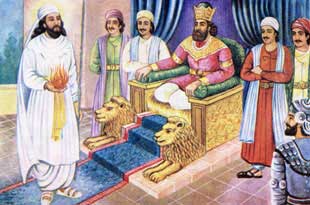 |
Zoroaster displays his credentials to King Vistasp |
|
| |
A search was ordered by the King and the false evidence planted by the plotters was duly found. The King then threw Zoroaster into prison.
Meanwhile, the King’s favourite horse was stricken by palsy and none could cure it. Zoroaster was asked to cure the horse, and was told that if he healed the horse, the King and his family would help Zoroaster to spread his message far and wide. The horse was cured, and thereafter, King Vishtaspa willingly aided Zoroaster.
Sometime later, a neighbouring ruler invaded the kingdom to protest the new faith. While armed conflict was raging outside, Zoroaster was in a temple, absorbed in his devotion. A solider of the attacking forces entered the temple and stabbed Zoroaster to death. At that time, Zoroaster was 77 years old.
THE THEOLOGY OF ZOROASTRIANISM
Theology of a religion essentially means what that particular religion has to say about God. Presently, we shall briefly discuss the theology underlying Zoroastrianism. Zoroastrianism is the first monotheistic religion, that is to say it holds that there is only ONE God. Zoroaster named this God Aura Mazda, or MAZDA AHURA meaning WISE LORD.
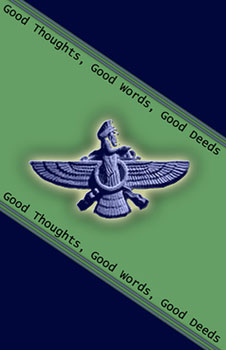 |
The three pillars of Zorastrianism |
|
|
Dr. Fanibanda explains that Ahura means the Creator of Life and Mazda means the Creator of Matter. Thus, says Dr. Fanibanda, Ahura is identical with Lord Siva while Mazda is identical with Mother Parvathi, in the Hindu tradition.
Although there is only one God, in the world created by Him, there are evil forces. It is not clear wherefrom these evil forces emerged, although one might say evil surfaces when man forgets God. In any case, Zoroaster, says Dr. Fanibanda, asks man to lend his ears to the highest Righteousness/Truth, and, using one’s own illuminated mind, make a choice between the path of Good and the path of Evil.
Good and Evil are represented by separate spirits which are “Twins”. They are opposite to each other in thought, word and deed. One is the Increasing Spirit and the other is the Decreasing Spirit. One is Good and the other is Bad. Only the Wise are capable of fostering the right one. Duality is the very nature of the Universe and as the human body is a part of the Universe, it also must experience these Twin opposites.
By the way, it is interesting to note that the two kinds of spirits are named ahuras and daevas. One cannot missing seeing the similarity to the asuras and devas of Hindu mythology; only, in Zoroastrianism, the ahuras are the good spirits and the daevas are the evil ones.
 |
To listen to a Zorastrian prayer which summarises the main teachings of Zorastrianism, click here. |
|
|
Dr. Fanibanda sums it all crisply as follows: “While Zoroastrian theology is monotheistic, its philosophy is dualistic and the ethics are based on the trilogy of good thoughts, good words and good deeds.” Love, Wisdom & Knowledge and Service are the anchors of Zoroastrian philosophy.
Zoroastrian scholar Dastur Dabu reduces the essence of the teachings to some simple rules as follows:
- A Zoroastrian must always be good and never harm others.
- He should see unity in the midst of apparent diversity.
- He should lead a life of self-abnegation, by selfless conduct and service to the world at large.
- He should never force his belief on others – in other words, he should practice religious tolerance.
-
He should maintain purity of body, thought, emotions and soul; live a life of moderation; be responsible, progressive, productive and peaceful; take care of the environment – respecting and loving all living beings.
-
When a saintly person is totally altruistic and disinterested, he performs all meritorious deeds without expecting any personal benefit or personal gain.
 |
To listen to the Zorastrian prayer of Good Action which is similar to the Gayatri Mantra, click here. |
|
|
|
|
“A Zoroastrian must always be good and never harm others.” - Zoroastra |
|
Are these not amazingly similar to Swami’s teachings?!
The Zoroastrian scripture is called the Avesta. Thanks to the forces of history, it consists of fragmentary and sometimes corrupted texts. It is written in old Iranian, a language similar to Sanskrit.
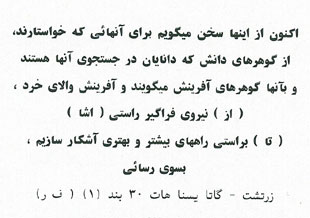 |
Gathas - Holy Hymns of Zarathustra |
|
|
The major sections of the Avesta are:
Gathas, the holy hymns of Zarathustra, are his own words and were preserved in oral tradition for many centuries as there was no written script in Zarathustra’s times.
Yasna, a liturgical work that deals with worship, ceremonies, and offerings. The Yasna includes texts called the Gathas, believed to be sung by Zoroaster himself.
Vispered, a supplement to the Yasna.
Yashts, containing mostly hymns of praise.
Videvad, a detailed code of ritual purification.
|
Zoroaster taught that humans bear responsibility for all their actions. Good befalls those who do good, those who engage in evil, have only themselves to blame when they suffer later. This is nothing but the Law of Karma, which Swami refers to as the Law of Reflection, Reaction, Resound. In the scriptures, there are clear references to this law as follows:
 |
To listen to a Prayer from the 1st Gatha of Avesta, click here. |
|
|
|
 |
To listen to a Prayer from the 2nd Gatha of Avesta, click here. |
|
|
-
“God has the best memory of all acts of men and demons – even foresight with regard to what might happen later on.” Gatha [29-4].
-
“Evil plight for those who are evil, add good reward to those who are righteous. This is to be Thy regulation, O God, till the end of the Universe.” Gatha [43-5].
-
“God has fixed two great laws for the education of men. O Men! You get happiness or misery in accordance with the laws, namely: Bliss for the righteous, and a long drawn out suffering for the evil-doer.” Gatha [30-11].
-
“God has the knowledge of every living being who is good in self-sacrifice, through his righteousness.” Yasna [7-27].
-
“All good thoughts, words and deeds, done through wisdom, lead to the heavenly condition. All evil thoughts, words and deeds, done through the absence of wisdom, lead to the worst plight.” Vispa Humata
|
Interestingly, chanting the Divine Name finds an important place in Zoroastrianism also. Zoroaster asks Ahura Mazda, “Reveal unto me that Name of Thine that is the greatest, best, fairest, most effective, best healing, that which destroyeth best the malice of men and demons.”
Ahura Mazda then replied: [extracted from: The Religion Of Good Life, Zoroastrianism, P.P. Masani, George Allen and Unwin, LONDON , 1938]
|
O Holy Zoroaster, My first Name is, “I am”.
My Second Name is the Giver of Herds.
My Third Name is the Strong One.
My Fourth Name is Perfect Holiness.
My Fifth Name is the All-Good created by Mazda, the offering of the Holy Principle.
My Sixth Name is Understanding.
My Seventh Name is He that possesses Understanding.
My Eighth Name is Knowledge.
My Ninth Name is He that possesses Knowledge.
My Tenth Name is Blessing.
My Eleventh Name is He that grants Blessing.
My Twelfth Name is Ahura, the All-wise.
My Thirteenth Name is the Most Beneficent.
My Fourteenth Name is He in whom there is no harm.
My Fifteenth Name is Unconquerable.
My Sixteenth Name is He that maketh the true account.
My Seventeenth Name is the All-seeing.
My Eighteenth Name is the Healer.
My Nineteenth Name is the Creator.
My Twentieth Name is Mazda [Omniscient]. |
Compilations exist listing many more Names. 101 names of Ahura Mazda form a part of a Zoroastrian’s daily prayers. What is one supposed to do with these Names? Masani has the answer: “Whoever takes it [the Name] on his lips and is engaged in meditation of His attributes, armours to protect himself against the inroads of evil. Even the Prophet himself is asked by Ahura Mazda to repeat His Names.
“If thou wilt, O Zarathushtra,
Vanquish all that hate malignant,
Hate of demons, hate of mortals,
Of Faith’s perverse oppressors,
Two-foot heretics and liars,
Four foot wolves, wide fronted armies,
Bearing on the bloodstained banner,
Then these Names repeat bemuttering,
All the day and all the night time.”
 |
To listen to the 101 Names by which Ahura Mazda is adored in Avesta, click here. |
|
|
So we see that Namasmaranam, or chanting of the Name that Swami prescribes to us, ever so often finds a place in Zoroastrianism also. By the way, it finds a place in Islam too, but we shall deal with that matter elsewhere.
We must now make a reference to an aspect of Zoroastrianism often referred to as Mithraism. Scholar R. P. Masani notes that though the Vedas speak of the Supreme Lord and the One Truth, the Vedic liturgy allowed room for many minor deities.
In the same way, says Masani, although Zoroaster held Ahura Mazda to be Supreme, in due course, many celestial beings came to be worshipped. Thus many angels known as Yazata came to be worshipped. It was believed that the worship of these angels would confer various benefits and rewards. Among the Yazata, a prominent one was Mithra. This is very interesting because Mithra figures prominently in Vedic rituals and worship also, which testifies to the strong similarities between ancient religious practices in Iran and in India. |
|
|
Reading aloud from the scriptures |
|
Masani says that of all the celestial beings that ruled the earth, Mithra was regarded as the strongest of the strong, the sturdiest of the sturdy, the most diligent and intelligent among the deities, the most victorious and glorious. Masani adds, “In the scriptures, Mithra and Ahura are often invoked together. Their union is actually pre-Zoroastrian and corresponds to Vedic Mithra Varuna.” Mithraism which pre-dates Zoroaster, regained popularity for a while after him.
Incidentally, Mithraism is of some interest because it penetrated the Roman Empire. It is said that it was quite popular among Roman garrisons, and was also a rival to Christianity. Some are of the view that a few Mithraic rituals and even beliefs became incorporated into Christianity. The twenty-fifth of December, for example, was actually the date on which the Romans celebrated the birthday of Mithra, and was adopted as a convenience by the early Christians as the birthday of Jesus since it was a public holiday in the Roman Empire.
There has been quite a lot of discussion amongst scholars concerning the relationship between Zoroastrianism, Judaism and Christianity. This is not surprising, given the historical fact that all these religions originated in the same geographical region. For a while, the belief prevailed that Zoroastrianism had borrowed form Judaism and even Christianity but later scholars who have thoroughly analysed this question have rejected this view.
It now appears that around six hundred BC, a large number of Jews were carried away to Babylon as captives. Contact with Iranians during the long period of exile made the exiles absorb many doctrines from Zoroastrianism, such as the immortality of the Soul, the resurrection of the body, and reward and punishment in accordance with one’s moral track record. In this context, the famous German scholar Max Mueller says, “It is well known that these doctrines were entirely or almost entirely absent from the oldest phase of the religion among the Jews.” Another scholar Dr. West has compared Jewish texts written before and after the Persian contact and remarks that the Book of Job in the Old Testament has “some appearance of being a translation or adaptation from a Persian, or Assyrian text.”
In an article entitled Zoroaster and the Bible written in 1894, scholar L. H. Mills says that “it pleased the Divine Power to reveal some of the most important articles of our Catholic creed first to the Zoroastrians, and through their literature to the Jews and ourselves.” He then goes on to add: “To sum up, I would say, as speaking from an orthodox point of view, that while the scriptures of the Old and New Testaments are unrivalled in their majesty and fervour, constituting perhaps the most impressive objects of their kind known to the human mind, and fully entitled to be described as ‘inspired,’ yet the humbler but to a certain extent prior religion of the Mazda worshippers was useful in giving point and body to many loose conceptions among the Jewish religious teachers, and introducing many ideas which are entirely new, while as to the doctrines of Immortality and Resurrection, the most important of all, it positively determined belief. But the greatest and by far the noblest service which it rendered was the propagation of the doctrine that ‘virtue is chiefly its own reward,’ even in the great religious reckoning, and ‘vice is its own punishment.’”
In passing we might add that Zoroastrianism has made a contribution to Islam too, in the shape of five daily prayers. The use of water by Zoroastrians in ablutions and their emphasis on ritual purity, is also common to Judaism.
Perhaps the best way of concluding this section is to quote the concluding paragraph of Dastur Dabu’s book, Handbook of Information on Zoroastrianism [Published by the P.N Mehta Educational Trust, Bombay ].
A Zoroastrian’s life should be an open book for others to examine. Religion should permeate every thought, word and deed; as one should be judged from his behaviour and not mere lip-profession of beliefs and creeds.
Head and Heart should be co-ordinated so that there is no lop-sided development. A Zoroastrian should have Purity as the key note of his life – physical, moral, mental and spiritual. We have to seek Truth through humility and honesty. ‘With heart within and God overhead,’ there should be courage to encounter all handicaps of life.
If the Zoroastrian concept of life is based on the struggle against evil, we must be watchful of temptations. We have to some day return to our heavenly abode, and must keep the record of our deeds clean and fair.
|
|
|
“A Zoroastrian should have Purity as the key note of his life." - Zoroastra |
|
Can anyone dispute any of these stipulations?
HISTORY OF PERSIA, AND ITS RELATIONSHIP TO THE HISTORY OF ZOROASTRIANISM
In terms of history, Zoroastrianism is quite unlike many of the other ancient religions such as Christianity and Islam, for example, which also had their origins in the Middle East . While Christianity and Islam spread far and wide and are flourishing to this day, Zoroastrianism had its innings long ago, and is now almost on the throes of becoming extinguished.
|
|
As already mentioned, the religion took root in ancient Persia , and the Zoroastrian-Persians established the first known international empire. The Achaemenian [Hakkamanishya] Empire founded by Cyrus [Kurush] the Great stretched from Greece to Egypt and from Central Asia to India. There were many illustrious kings in the dynasty like Cambyses [Kambastha], Xerses [Ksharaya], and Darius [Darayavayush]. This dynasty ruled from 550 BC up to 330 BC.
The second Zoroastrian dynasty was that of the Sasanians which was founded by Artaxerses [Artakshira or Ardeshir]. The Sasanians ruled from 211 AD up to 634 AD, till the Arab conquest of Iran.
In the early seventh century AD, Islam was growing out of Arabia, even as the Romans and the Sasanians were fighting with each other. In 634 AD, the Arabs sent an ultimatum to both the Persian Emperor Hormazd and the reigning Roman [Byzantian] emperor to embrace Islam or face war. Both empires decided on war.
The Arabs decided to attack first the Persians [Sasanians], and dealt a shattering blow at the Battle of Cadesia [Quadisiviyah] and captured the Sasanian capital of Ctesiphon [modern Baghdad]. The Romans [Byzantines] fared no better. Finally, in 642 AD, Islam firmly established itself in Persia. |
Putting all this together, one can basically distinguish four important periods as follows:
The reign of the Achaemenian Dynasty: 559 BC to 334 BC
The Greek period following the conquest of Persia by Alexander the Great 334 BC to 224 AD
The Sasanian Dynasty: 224 AD to 642 AD
The Islamic period: 642 AD to present day.
It was during the reign of Cyrus the Great of the Achaemenian Dynasty, that the Persian Empire reached its first great pinnacle. In his time, the Persian Empire was a Superpower. Cyrus conquered many lands but was a benevolent ruler, who respected local traditions, laws, languages and religions.
| |
|
|
| |
The Persian Empire During Cyrus and
Achaemenian Rule
[550 BC to 330 BC] |
|
In 539 BC, Babylonia surrendered peacefully to Cyrus, and he was welcomed as a great liberator because of his compassionate policies. He freed the Jews from captivity and helped them to migrate to their homeland, and to reconstruct their temple in Jerusalem. In the Old Testament, there are references to Cyrus as follows:
Now in the first year of Cyrus, king of Persia, that the word of the Lord spoken by the mouth of Jeremiah, might be accomplished, the Lord stirred up the spirit of Cyrus king of Persia that he made a proclamation throughout all his kingdom, and put it also in writing.
Thus saith Cyrus king of Persia, ‘All his kingdoms of earth hath the Lord given me; and he hath charged me to build him a house in Jerusalem, which is in Judah. Who is there among you of all his people? The Lord his God be with him and let him go up.’ II Chronicles - 36: 22, 23
That saith of Cyrus. ‘He is my shepherd, and shall perform all my pleasure; even saying to Jerusalem. Thou shalt be built; and to the temple, Thy foundation shall be laid.’ Isaiah 44: 28
After Cyrus came Darius, whose reign marked the zenith of the Persian Empire. Upholding the tradition established by Cyrus, Darius valued the rights of all people under his rule. He built the great city of Persepolis .
In 334 BC, Alexander invaded Persia and defeated the Persian army. He allowed his soldiers to loot and plunder and torch Persepolis. At the same time, Alexander considered himself to be a successor to the Achaemenina kings and paid a tribute to Cyrus the Great at his tomb. |
|
|
Cyrus the Great allowing Hebrew pilgrims to return to and rebuild Jerusalem |
|
He emulated many of the court customs of the Persians, and attempted to create a mixed culture, part Hellenic and part Persian. He married a Persian woman, and ordered all his generals and about ten thousand of his soldiers to do the same.
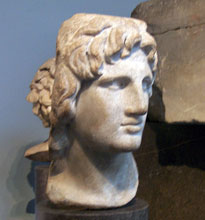 |
The bust of Alexander in the
British Museum |
|
|
In 323 BC, Alexander died, and his empire was divided amongst his generals. In this process, the Seleucid Dynasty was established in Persia by one of the generals. Thereafter, there was a constant battle between the Seleucids and the Parthians, a tribal kingdom in the north east of Persia.
By 224 AD, the Parthians consolidated their control over the whole of Persia. This led to the founding of the Sasanian Dynasty by Ardeshir I, and once again, Persia became a major power.
Their rule ended in 642 AD, when nomadic tribesmen from Arabia, fiercely proclaiming the newly founded faith of Islam, finally overran Persia. Thereafter, using the sword, all the natives were rapidly converted to Islam, and this saw the near extinction of Zoroastrianism in Persia.
A small of group of Zoroastrians escaped to India and sought asylum there. Their story now follows. |
THE EXODUS OF ZOROASTRIANS TO INDIA
Zoroastrian refugees fleeing from religious persecution in their native land Iran, came to India about 1,200 years ago. Their descendants are called Parsis, meaning people from Pars or Persia. As one scholar puts it, when the Parsis came to India as refugees, fleeing from Arab intolerance, it was providentially a reunion of “cousins”! The reference of course is not only to the common ancestry of the Aryans settled in India and the Aryans who settled in Persia but also to many features common between Zoroastrianism and Hinduism.
According to Parsi folklore, the immigrants landed on the west coast of India and spent the first nineteen years on the island of Diu [later to become a Portuguese colony]. After that they set sail again and landed this time in Sanjan also on the west coast of India, either in the year 936AD or in 716AD [many an intense argument has raged amongst Parsis over which date is more accurate.]
|
|
|
The Bal Vikas children from Mumbai depicting the Parsis arrival to India in His divine presence
during the 80th Birthday celebrations. |
The story goes that upon landing at Sanjan on the shores of Gujarat, the Parsi refugees pleaded with Jadhav Rana, the then King of Gujarat for refuge. There is an oft-repeated story that the King had doubts about the intentions of the asylum-seekers, and gave a glass full of milk to the chief Parsi priest, indicating that their land is full and that there was no place for outsiders or new settlers.
|
|
|
The King of Gujrat, Jadhav Rana listens and finally accepts the Parsis though with conditions. |
It is said that to remove the King's doubts about the intentions of the refugees, the priest took the glass of milk full to the brim, and added sugar to it. While doing so, he assured the King that just as the sugar blended into the milk without displacing any of it so too would he and his people blend into and sweeten the land. The King was apparently impressed by this assurance, and then granted Parsis permission to settle in Gujarat. It would of interest here to mention the 5 conditions laid by the king:
- To put their weapons down.
- To explain the religion.
- Women should adopt the dress of the land namely the Sari.
- To speak the Indian language (Gujarati).
- To perform weddings after the sun set.
Incidentally, India was already known for its tolerance and generously accommodating immigrants from other lands and as one scholar writes, it has become a second homeland to many newcomers like Jews, Syrian Christians, Central Asian and African communities. All were free to follow their own faith and take up different pursuits. The Parsis were one of the last to come in this manner.
For about three hundred years after landing at Sanjan, the Parsis lived in peace and harmony with the local community. They practiced their own religion but adopted Gujarati as their language, with however, a good mixture of many Persian words, naturally. Most practiced agriculture while some took to trade, carpentry etc.
The immigrants also accepted many of the local customs. Parsi women, in particular, dressed like Gujarati women, wearing sarees with reverse pallu and long-sleeved blouses. They even wore nose rings. Men wore trousers with long coats and tall cornered black caps. In passing we might add that nowadays there is nothing special to distinguish them from other highly westernized Indians except their fair complexion and sharp features.
In due course, the population of Parsis increased, and many moved from Sanjan to other parts of India like Cambay, Navsari, Anklesvar, Variav, Vankaner and Surat in the north, and to Thane and Chaul in the south. Pockets of Parsis were also found in Upper India, in Sind, Dehra-Dun and Punjab.
But not all climes were as hospitable as Sanjan. In Sind, Ibrahim the Ghaznavid perceived the Parsis as a colony of fire-worshippers and attacked them. In Thana, which was ruled by the Portuguese, they were seen as idolaters and pressurized by missionaries to convert to Christianity.
In Sanjan too, Islam caught up with them. In 1465 Sanjan was sacked and destroyed by the Muslim Sultanate. Parsis fought valiantly, side by side with their Hindu benefactors.
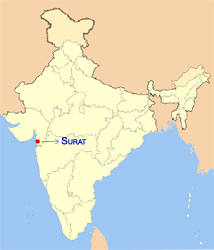 |
The City of Surat in the state of Gujrat |
|
|
Many settled down in the port town of Surat , in Gujarat , where in the fifteenth century, Europeans (the Portuguese, the British and the Dutch) had been given permission by the Mughals to establish trading factories. Unhampered by caste prejudices, Surat provided an ideal opportunity for Parsis to engage in occupations that they had never attempted before. Farmers became traders and chief native agents, while carpenters became shipbuilders. An adventurous few left Surat and moved south to Bombay, then only a set of islands in the wilderness. Here, they acted as brokers between the Indians and the Portuguese. They were in Bombay when it was ceded by Portugal to England in 1665 and three years later when the Crown handed over the island to the East India Company, Parsis were already a presence.
The East India Company had grand plans for Bombay, wanting to make this settlement a vibrant trading and commercial centre. In order to do so they needed to attract Indian traders, merchants and artisans to settle in and develop this frontier land. The terms they offered to native communities were generous and to an immigrant community like the Parsis, must have seemed almost heaven-sent. All persons born in Bombay would become natural subjects of England. All communities migrating to Bombay were guaranteed religious freedom and were permitted to build their houses within the fort walls, alongside the British, where they would be protected from any hostile attacks. |
The Parsis were quick to recognize and seize this unique historical opportunity and came to Bombay earlier than most, and in large numbers too. About them, a Governor of the Company in charge of Bombay wrote: “They are an industrious people, and ingenious in trade, therein they totally employ themselves.”
During the British period, the Parsis prospered very much, because they took easily to English education, as well as British trade and commercial practices. Many adventurous Parsis entered overseas trade; several excelled in banking and commerce. In short, thanks to Western education, Parsi men and women shone in different fields. With prosperity came charity. Many charitable hospitals, schools, colleges, orphanages, choultries in Surat, Bombay [now Mumbai] and Poona [now Pune] bear witness to the munificence of the community, which reached all strata of society.
They also excelled as lawyers, solicitors, doctors and administrators. Dadabhai Naoroji was the first Indian to be elected to the British House of Commons. Jamshedji Tata founded the great Tata industrial empire, more than a hundred years ago; he also founded the Indian Institute of Science, the premier science research centre in India, located in Bangalore.
The famous conductor Zubin Mehta is a Parsi. India’s only living Field Marshal, Sam Manekshaw is a Parsi. Homi Bhabha the brilliant nuclear scientist, often hailed as the Father of Nuclear Science in India was a Parsi. So was late J.R.D Tata, the doyen of Indian Industrialists, and the man who gave shape to commercial aviation in India.
However, the Parsi population has declined, not only in India but also globally. Population experts fear that in a few decades, Parsis may become extinct! The Census conducted in India in 2001 recorded that there were only about 69,000 Parsis left in India.
About five thousand are supposed to be in Pakistan, mostly in Karachi. In Iran itself, the number is supposed to be down to about three thousand. Many Parsis have migrated to North America and it is believe about fifteen thousand or so have settled there. |
|
|
The Government of Tajikistan persuaded the UNESCO to celebrate the year 2003 as “3000 th Anniversary of Zoroastrian Culture.” It is believed that the Tajiks were originally Zoroastrians and a large majority of them continued to secretly practice their religion through many centuries of Muslim rule followed by communism, as part of the Soviet Union.
In passing, it must be mentioned that a small group of Zoroastrians came to India around the nineteenth century. In India, they are usually referred to Iranis.
In Iran, though Zoroastrians were generally persecuted, a few managed to rise to positions of eminence. Possibly the most famous Iranian Zoroastrian is Dr. Farhang Mehr, former Deputy Prime Minister of Iran, and also professor emeritus in Boston University.
PARSI CUSTOMS
We now turn to the customs followed by Zoroastrians, and inevitably this reduces to customs followed by the Parsis, since they constitute more than 95% of the Zoroastrian survivors. We discuss the customs under the subheadings: Dress; Navjot or the initiation ceremony; Fire Temples; Marriage; Conversion; and Eschatology [the funeral rites and the doctrine of life after death].
Dress
In a large concourse of people, it is necessary to proclaim certain powers and privileges of a brigade or corps, by means of such badges. In Iran, the Mazdayasins had such a uniform, which, because of its religious significance, was held to be sacred so that even kings used to wear it with the same reverence. The uniform has two main elements, the Sudreh, which is a shirt, and Kushti, which is a waistband.
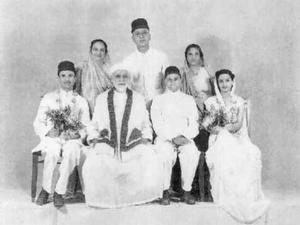 |
The Parsis in Traditional dress |
|
|
The shirt is a loose garment of white cotton, the colour implying Asha, the fundamental doctrine of Zoroaster's Faith. It is called Sudreh, which means 'the Good Path'.
It is usually short-sleeved and reaches down nearly to the knees. It has no collar and is cut low down over the chest; and in the centre there is a small pouch or bag-shaped attachment sewn on. This is called the gireh-ban. This is the most important part of the garment, for it is the symbolical repository of the good thoughts, the good words and the good deeds of the wearer.
The Kushti is woven out of while lamb's wool and the process of weaving it is a complex one. It is prepared, as a rule, only by women of the priestly class, though nowadays sometimes non-priestly women also may weave it. |
First, the wool is spun into a fine thread, and two threads of the requisite length are twisted together, symbolising the union of the Two Spirits for manifestation. Then seventy-two such double strands are taken and woven together into a long thin hollow tape.
The number seventy-two represents the seventy-two chapters of the Yasna, the most important book of the Scriptures. The hollow tape is then turned carefully inside out after which there is a ceremonial washing and finally it is rolled up tightly. Every detail in the preparation of the Kushti is symbolical, the seventy-two strands are divided into six groups of twelve each, these numbers also having definite significance.
As worn over the Sudreh, the Kushti goes round the waist thrice, to signify the three commandments of Zoroaster - humata, hukhta, huvarshta. It is secured by 'a sailor's knot' before and behind. Each twist of these knots is meant to bring one important truth to the mind of the wearer: (1) that God is the One Eternal Being, (2) that the Mazdayasni Faith is the true Faith, (3) that Zoroaster is the true inspired Prophet of God, and (4) that the wearer shall try to obey the three commandments.
In short, the Sudreh and the Kushti are emblems that are supposed to remind the wearer that he/she is a valiant soldier of Ahura Mazda, and must fight against vices such as envy, anger, lust, greed, etc. |
|
|
Kushti being tied to a young Parsi |
|
Navjot
 |
Sai performing the Navjot ceremony
for a fortunate boy |
|
|
The Navjot (literally, 'the New Birth') ceremony marks the second birth of the child, i.e., into the Zoroastrian fold. It is rather like the Upanayanam ceremony amongst Hindus, except that the both boys and girls are permitted to undergo Navjot.
The Navjot is a confirmation ceremony wherein a new believer is initiated into the Zarthusti (Zoroastrian) Religion. On this auspicious day, the child for the first time wears the sacred ‘Sudreh’ and ‘Kushti’ – a white muslin undershirt around which is tied a consecrated hand-woven thread made from lamb’s wool.
These vestments are unique to the Zoroastrian faith and their ritualistic wearing serves as a daily affirmation of the doctrines of Ahura Mazda, the Lord of Light and Wisdom.
The ceremony, it is enjoined, should take place between the ages of seven and fifteen, but it is rarely postponed beyond the age of puberty and usually the age is between seven and nine.
After this investiture the Zoroastrian has to wear the shirt and the girdle day and night (except while bathing), and these constitute the dress of the body of a Zoroastrian when it is carried to the last resting place. |
Navjot has two purposes: 1) Priests, relatives etc., invited on the occasion are witnesses to the candidate’s “creed”. The creed contains the announcement, that the new initiate accepts the religion as revealed to Zoroaster by God. The congregation having approved of this open declaration, the leading priest then offers to the candidate two sacred emblems of the community – Sudreh and the Kushti. In Iran, this function is called Sedreh-Pushi. 2) Having gone through this ceremony, the neophyte is a Parsi by birth and a Zoroastrian by choice.
 |
To listen to the prayer chanted during the Navjote Ceremony for the purification ritual, click here. |
|
The formal ceremony has four parts:
1) The sacred ablution, preparing the neophyte with purity of the body, and also attuning his mind, so as to benefit from blessings and higher influences. He or she accepts a sacramental drink during this part of the ritual.
2) The solemn declaration of the creed and granting of the Sudreh.
3) The recitation of prescribed verses.
4) The priest showers blessings.
Holy fire is kept burning throughout the function. Both Parsi boys and girls are initiated with a uniform ritual.
Fire Temples
|
|
Fire has been worshipped in many communities from ancient times. The cult of fire was common among the Aryans from times of antiquity and was carried over to the nations and communities descended from the ancient Aryans. Thus it is that we find the cult of fire among the Romans in the West, as also among the Zoroastrians in Iran and the Aryans of India. The Romans, for example, had fire priests whose job it was to kindle the fire. The fire of their hearths could not be carried away except for sacred purposes. The hearth of Vesta at the foot of the Palantine Hill in Rome was the sacred centre for the whole Roman State. The eternal fire in it symbolised the presence of God and the protection of Heaven and of the State’s existence. So also among the Greeks, there was at Olympia, an altar of Pan, the fire on which was never allowed to be extinguished.
The ancient Germans had an ever-burning lamp placed before the statue of their god Thor. The Jewish religion had its shining flames and burning fires as emblems of God’s majesty and presence. “The fire on the altar,” said the Lord speaking to Moses, “shall always burn and the priest feed it, putting wood on it every day in the morning. This is the perpetual fire that shall never go out on the altar.” |
Although Fire occupies an important position in the religious system of Zoroastrians, R. P. Masani [a Parsi commentator] remarks that Zoroaster merely recognized in fire a “type of Immortal Light and the spiritual resurrection of the Soul”. He adds, “Nowhere does he [Zoroaster] enjoin the worship of fire”. Max Mueller too disposed of the claim sometimes made that Zoroastrians were fire worshippers with the observation “that if the religion of Zoroaster were called fire-worship, the same name would have to be applied to the religion of India, any, even to the religion of the Jews.”
Fire temples are unique to the Zoroastrian culture. Originally, there does not appear to have been any fire temples. For example, there is no mention of fire temples in Zoroaster’s Gathas. Nor is there even an Avestan word for fire temples.
It seems the first fire temples were built in the time of the Parthians, and possibly as early as the Achaemenid dynasty. These temples were built atop artificial earthen mounds, but their architecture was open and had no roof. Apparently, the Zoroastrians of those times believed that God could not be shut into walls.
Apart from the fire burning in these minor fire temples of those times, there were supposed to be three Great Fires, said to have been brought forth by Ahura Mazda. These fires and the minor fires continued to burn in the places they were established, till the Arab conquest of Persia.
After the Arab conquest, fire temples were seized or destroyed, even as the native religion went underground. Zoroastrians then began worshipping fire privately in buildings. |
|
|
The last Zoroastrian Emperor of Persia, Yazdegard III came to the throne in 632 AD, and he died in 651 AD. After that, the Zoroastrians in Iran were chased from place to place for about fifty years by bigoted Arabs. After this, they are believed to have lived for nearly a hundred years in the mountains of Kohistan, and after that at Hormzud for nearly fifteen years. The first convoy to India arrived at Diu, bringing in a metal urn, one of the great holy fires [Adur Burzen Mihr] in a metal urn and the implements and apparatus or the Alats to consecrate the Fire. As we saw earlier, these original immigrants then moved from Diu to Sanjan. After successfully settling in Sanjan, as thanksgiving they consecrated an Atash-Behram fire dedicated to Behram Yazat and named the fire IranShah meaning King of Iran. The fire continues to burn to this day, for over 1200 years.
During this interim period when the Parsis had not fully settled down in India, they kept moving the holy fire from place to place, before establishing it in Navasari, where they kept it for 318 years.
 |
Fire Temple In Udwada established in 1742 |
|
|
When the Muslims attacked Gujarat, the fire was moved from Navasari to many places, including the Bahrot caves, and ultimately to its current location at Udwada, where it was established on 27th October, 1742. This fire has been burning ever since, and has been derived from a fire brought to India soon after the Zoroastrians came to India in the seventh century. And that fire brought in a metal urn was derived from another ancient fire whose history is hardly known. Thus, the Udwada is certainly one of the oldest fires we know of!
To get back to the cult of fire embedded in Zoroastrianism, some scholars are of the opinion that Zoroastrians are Zoroastrians revere God through nature. They perceive Divine presence in the Universe, which is like an image of God. Humans, animals, fire, sky, earth, waters and plants remind one of Nature’s architect. So, a Zoroastrian can offer his homage to this Invisible Presence of God all around him. |
The visible fire is the material emblem of that energy which is present in all the atoms in the universe and many other flames and light on a higher plane e.g., our vital essence, the pure flame of love and compassion, the intuitional flash guiding us. There is a special prayer that says: “Our Inner Fire may teach and enlighten us as the Monitor.” In other words, Inner Fire is equated with Conscience.
In the litany Atarsh Niyaesh, the symbol of Fire is personified as the son of AhuraMazda, and in Yasna Haptanghaiti, as the most beautiful Body of God. These references are not to the actual physical Fire but to the Divine Spark or the Inner Fire in man, and therefore the Fire is our Inner Teacher or Guru. “Gu’ means darkness and ‘Ru’ means remover or destroyer. The word means 'He who destroys the Darkness of Ignorance'. We see here a very close parallel to certain Vedic concepts, according to which the Fire of Agni burns Agnana or spiritual ignorance, through the Self-effulgent Illumination within the Heart.
In the Litany of Fire, Atarsh-Niyaesh already alluded to, it is also said that the Fire looks at the hand of all those who approach it and asks, “What has the walking friend brought as gift for the sitting Friend?" The Sitting Friend is the Inner Fire, and the walking friend is the body which goes forth in the outer world. All actions performed by the body are to be dedicated to the Inner Friend, and thus the fruits of these actions are not desired by the individual. By offering everything to this Inner Friend, one emerges grand, great and Godly.
Fire is also regarded as a symbol of Asha [equivalent to Dharma], and the “original light of God”. It is a glowing symbol of God, and thus holds a special place of esteem in the religion. The visible fire is also regarded as a material emblem of many other forms of fire and light on a higher plane, e.g., Pure Love, Compassion, etc. There is a special prayer that says: “Our Inner Fire may teach and enlighten us.” Prayer is often done in front of a fire and consecrated fires are kept perpetually burning in major temples.
A few remarks now about the so-called Fire Temples. There are actually three grades of Zoroastrian temples. They are:
Atash-e-Behram. This is the highest form of consecrated fire, made out of 16 different types of fires, dedicated to the Angel of Victory. There are eight such temples in India (four of which are in Bombay ), and one in Iran.
Adaran: This consecrated fire is made out of four different fires, dedicated to the Angel Adar, who confers joy and courage.
|
|
|
Dadgah or the hearth fire is an unconsecrated house fire. The Temple in which this fire is enthroned is called Dar-e-Meher. This temple is dedicated to the Angel Mithra presiding over Truth and Justice. It is in this temple that priest in charge administers oaths and delivers judgements on disputed matters.
 |
A Zoroastrian Fire Temple in Yazd holds a traditional fire which has been kept alight by Zoroastrian priests, continuously for over 1100 years.
|
|
|
A Zoroastrian Fire Temple in Yazd holds a traditional fire which has been kept alight by Zoroastrian priests, continuously for over 1100 years.
In Zoroastrian temples, there is a fire in the innermost sanctum sanctorum, that is always kept burning by a priest. Non-Zoroastrians are not allowed to enter the temple, out of fear that someone not of the faith, might pollute the place.
The typical Zoroastrian devotee enters the temple after a wash, says certain prayers and offers a donation and an offering of sandalwood, before entering the room with the fire. There the sandalwood is offered to the sacred fire. The offering is the symbolic gift made to the sitting friend by the walking friend – alluded to above.
The rooms are tiled mostly in marble, and sparse in decoration. There are about 60 such temples all over the world out of which about 48 are located in India. |
Marriage
The state of matrimony has always been regarded as the most important part of life by all Aryans. In the Vendidad it is clearly stated that Ahura Mazda is better pleased with a married man than with an unmarried one, and that He is better pleased with a man having progeny than with one who has none. It has always been regarded as the bounden duty of the Zoroastrian to marry and to bring up a family, and thus to ensure the continuance of the race and the religion.
Parsi marriages are celebrated immediately after sunset. The essential part of the ceremony consists of the recital three times of the marriage contract by the officiating priest. The original formula is in the Pahlavi language, which was the language of Iran at the time of the Arab conquest. The same ceremony is often repeated in Sanskrit as well, out of deference to a promise given to the king of Gujarat who gave asylum, that the marriage ceremony should also be conducted in a language intelligible to the rulers of the land where they had been permitted to settle down.
The actual marriage ritual has much in common with Hindu practices. To start with, the couple go through preparatory rites that involve ablution, prayer etc. They then proceed to the wedding hall where they are received with Aarathi in the Indian style. The bride and the groom sit opposite to each other with a temporary veil between them. This typifies the initial stage of Divine Creation, with the groom representing the Spirit and the bride representing Matter. Their palms are then joined, symbolizing abiding promise. All along there is chanting by the priests. The veil is then removed, after which the bride sits next to the groom. Then follows the essential part of the marriage ceremony. Basically, it consists of questions from the Priest to the witness of the bridegroom and of the bride. The questions and answers proceed as follows:
The Priest: ‘In the presence of this assembly, that has met together in the city of ………, on the....day of month of the year....of the Emperor Yazdagard Shahriar of the Sasanian dynasty of auspicious Iran, say whether you have agreed to take this maiden named....in marriage for this bridegroom, in accordance with the rites and customs of the Mazda worshippers, promising to pay her 2,000 dirams of pure white silver and two dinars of standard gold of Nishapur coinage?
The Witness of Bridegroom: “I have.”
The Priest: ‘And have you and your family with pure mind and truthful thoughts, words and deeds and for the increase of righteousness, agreed to give for ever and aye, this bride in marriage to ….?
The Witness of Bride: “I have agreed.”
The Priest to the couple: “Have you desired to enter into this contract with pure mind and until Death do ye part?”
Both reply: “We have agreed”.
The rest of the ceremony is the invocation of the blessings of God and of the Amesha-Spentas and of the Yazatas upon the newly joined couple and an address from the Priest to them as to their conduct in life. This part of the ceremony is in fact called Ashirwad, the Sanskrit word for blessing.
Conversion
Though the message of Zarathushtra is universal and the Zoroastrian religion is considered to be a religion of choice “Daena Vanghuim”, there is a rule amongst Parsis that to be a Parsi [read Zoroastrian], one must be born a Parsi; there is no such thing as conversion. It is not clear whether such a practice is integral to the religion or was a custom adopted by the Parsis, when they were granted refuge in India. Some historians believe that when they were granted asylum, the local ruler stipulated that Parsis shall not spread their religion through conversion. Others, however dispute this view and say that the ban on conversion is integral to the religion. Dr. R. Karanjia, Principal of the Dadar Athornan Madressa, a school that imparts religious education, says that conversion is a non-issue. “Zoroastrianism is an ethnic religion. We believe that religion is decided by birth.”
Inevitably, the passage of time has weakened the orthodoxy and many reformists want to change the diktat that one has to be born a Parsi. In the twentieth century, to some extent this rule of the faith was relaxed for children born of Parsi fathers and non-Parsi mothers. But the rule is rigidly adhered to if the opposite is the case. Reformists now advocate the following: a Parsi woman either married to or divorced from a non-Parsi man be allowed to practice her faith; a child born of a marriage between a non-Parsi man and a Parsi woman be accepted into the faith; the community accept conversion to Zoroastrianism.
The issue of conversion came to a head when Ratan Tata, the father of the famous industrialist J.R.D Tata married a French woman named Suzanne. Finally, Suzanne went through the Navjot ceremony and changed her name to Sooni. Everybody thought that Suzanne/Sooni had been converted and was now a Parsi. But when Sooni tried to enter a fire temple, she was denied entry, ironically by the very same priests who had officiated during the Navjot ceremony.
Following this, the Bombay Parsi Panchayat filed a suit in the Bombay High Court, contending that the so-called conversion of Suzanne to Zoroastrianism was invalid and that Zoroastrians had never carried out religious conversions in accordance with the promise given to the ruler who gave asylum to the first Zoroastrians. |
|
|
Sai with a Zorastrian High Priest
Dr. Minocher Homji |
|
Justices Davar and Beamon, who presided over the case, traced the history of Parsis and came to the conclusion that the ban on conversion was not integral to the religion. The verdict was, however, strongly disputed by the orthodoxy, who never really accepted Sooni as a Parsi.
The issue of conversions evokes strong opinions. The late Dastur Peshotan Peer, a hardliner, said that Parsis who married outside the community were “living in adultery”. The choice, he said, was clear: “If Parsis marry non-Parsis, they should no longer consider themselves part of the community.” Peer was firm in his conviction that conversion is forbidden by the religious texts. He argued: “Zoroastrians left Iran to preserve their religion and to preserve the purity of their blood and race. To marry into other faiths is to betray our ancestors.”
The Association of Inter-Married Zoroastrians (AMZ) was formed to “protect and safeguard the rights, privileges and benefits of Parsi Zoroastrians married outside their group”. With regard to the rights of children born to Parsi mothers and non-Parsi fathers, the AMZ asks that children of such a marriage be allowed to have their Navjotes openly in baugs (traditional areas for ceremonies, often in the compound of a fire temple) and that they be accepted as Zoroastrians. The AMZ contends that if the spouse has no objection to this arrangement, there is no reason why anyone should object.
Notwithstanding all this, prejudice often reigns strong. One such high-profile controversy concerned the Bombay Parsi Panchayat’s refusal to allow a Parsi woman who had married a Hindu Gujarati to be given the last rites at the Tower of Silence. It was only after a great din was created by the community that the Panchayat rescinded its decision and allowed the rites on the basis of an affidavit by the next of kin swearing that the deceased had been a practicing Zoroastrian.
In 1994 an almost complete turnaround of this attitude was seen in the case of Nusli Wadia. This story is very interesting. It starts with Neville Wadia, a member of the Wadia family converting to Christianity way back, and adopting the name Neville. In due course, Neville married Dina, the daughter of Mohammed Ali Jinnah, then a resident of Bombay. Later Jinnah was to become the founder of Pakistan. Jinnah was furious when he learnt that his daughter wanted to marry a Parsi/Christian. He tersely asked her, “When there are millions of Muslim boys to choose from, do you have to marry this non-Muslim?” Dina was ready with a reply, based on the fact that her father had married a Parsi woman named Rattanbai. She asked, “Father, when there were millions of Muslim girls to choose from why did you marry a non-Muslim?” Jinnah did not like what his daughter said. He merely muttered, “But she became a Muslim afterwards.”
Neville and Dina had a son Nusli and in 1994 Nusli went through the Navjot ceremony to become a Zoroastrian! This time, the orthodoxy did not raise a rumpus; on the other hand, this conversion back to the ancestral religion was widely welcomed.
Jurist Nani Palkivala observes: “One of the wonders of Zoroastrianism is that it places great emphasis on the freedom to choose. And apart from this, both the Constitution of India and the Special Marriages Act, 1954 ensure equality between the sexes. Yet there is a marked discrimination between intermarried males and females among Parsis.”
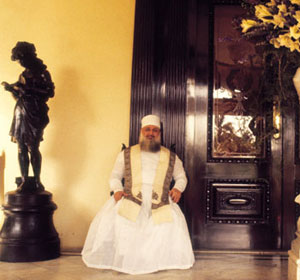 |
Dastur Dr. Firoze Kotwal, Zorastrian High Priest |
|
|
While the reformists argue that they are not bent on changing the precepts of the religion but are merely trying to ensure its continuance, the orthodoxy sees these changes as sacrilege. Dastur Dr. Firoze Kotwal, one of the seven high priests, said: “We have to preserve the identity and purity of our race. I say this entirely from a religious perspective and not from any contempt towards other races or peoples.”
There is one argument in favour of preserving the racial stock. Another opinion is that racial purity should be secondary to the continuance of the religion. Noshir Dadrawalla, who edits a pamphlet called Deen Parast (The Faithful), disputes the argument that the religion is dying. He says: “We have survived Alexander, we have survived the Arabs. We have lost empires. We have lost the status of being a state religion but we have always risen from the ashes. There is absolutely no reason why we cannot survive.” Dadrawalla believes that the parameter for this survival is religion. “It is religion that gives a well-defined code of living and regulates the community’s social life. Unless we see Zoroastrianism as a vital factor in our daily lives, our survival is endangered. We must strengthen our sense of community and set aside individualism.” |
Dadrawalla has no hesitation in identifying intermarriage as “the greatest threat to the community”. His comment is also a reference to the late age at which most Parsis marry and to the prevalence of single-child families.
While purists want orthodoxy, many worry that if there is such a rigid structure, Parsis, whose numbers are constantly diminishing, would soon become extinct. The community places a high premium on education, viewing marriage as secondary to it. Its members postpone marriage until they can afford housing. The result is late marriage and fewer children. Statistics available with Parsiana, a community magazine with a balanced perspective, show that of every 100 women between the ages of 19 and 45, roughly 30 per cent do not marry at all, 20 per cent marry outside the religion, and of the remaining 50 per cent (who do marry and do so within the community), the total number of children borne do not exceed their own numbers.
Water in Zoroastrianism
Having descended from the Aryans, Zoroastrians, like their Hindu counterparts, venerate water. Of course, Zoroaster proclaimed that there was only one God, but, as already noted, allowed room for deities and angels who would do God’s work here on earth. It is said that Ahura Mazda Himself called upon Zoroaster to revere Aredvi Sura Anahita, a mighty goddess who represented a mythical river, pointing out that water is essential for life, for crops, for generating wealth etc.
The homage originally offered to the pure waters of natural springs was later extended also to wells and rivers. In turn, this inspired many Parsis to dig wells for public use. In this context, particular mention ought to be made of Sir Jamsetjee Jeejeebhoy who lived in the eighteenth century. Jeejeebhoy was born in a poor family but with determination learnt many languages including English.
Full of enterprise, he visited China, entered into various business deals, and made a lot of money. Unfortunately for him, there was a disastrous fire in the Fort area [a walled city built by the British] where he lived. And in that fire, Jeejeebhoy lost most of his possessions. Undeterred, he again went to China and earned a lot of wealth – two crores of rupees, which at that time was like having billions of dollars!
But like most Parsis, Jeejeebhoy gave liberally to many public charities, over a hundred of them. He founded, among other things, the Sir J. J. School of Arts, the Sir J. J. School of Architecture, and the Sir J. J. School of Commercial Art, which exist to this day. As his fame spread, the residents of Poona approached him to build a bund in order to contain the raging waters of the Mulla and Mutha rivers, and the kind man obliged. |
|
|
He built wells and tanks all over Bombay, hospitals and schools in Surat and Navsari, Agiaries (temples of worship) in Bombay and Poona. His charity was not just confined to human beings. He contributed Rs. 80,000 to a shelter for animals, distributed money for the feeding of stray dogs, and built water places for cattle and horses.
By way of highlighting Parsi veneration for the elements, we quote the following passage due to Andrew Carnegie [extracted from Masani’s invaluable book The Religion of The Good Life: Zoroastrianism, already referred to].
“This evening, we were more surprised to see, as we strolled along the beach, more Parsee ladies, richly dressed, all wending their way towards the sea…………. Here on the shore of the ocean, as the Sun was sinking in the sea, and the slender silver thread of the crescent Moon was faintly shining on the horizon, they congregated to perform their religious rites. Fire was there in the grandest form, the setting Sun, and water in the vast expanse of the Indian Ocean outstretched before them. The Earth was under their feet, and, wafted across the sea, the air came laden with the perfumes of “Araby the Blest”. Surely, no time or place could be more fitly chosen than this for lifting up the soul to the realms beyond the seas. I could not but participate with these worshippers in what was so grandly beautiful!”
Disposal of the Dead
As in the case of all religions, the funeral ceremonies of the Parsis are conveniently discussed under two headings:
Disposal of the dead.
Ceremonies relating to the Soul
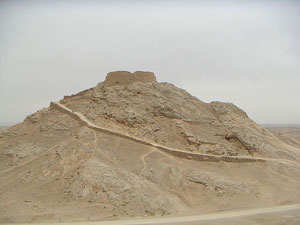 |
Tower of Silence in Iran |
|
|
The Zoroastrian system for disposal of dead bodies is unique in the world. It is based on the Zoroastrian principle that the elements, fire, water, and earth must never be defiled and be maintained pure. It is thus enjoined that after death, the body of the person must be disposed of in such a manner as not to defile the elements or to injure the living. The guiding principle is: sanitation, segregation, and purification. The actual procedure adopted combines the features of economy, hygiene and speed.
In ancient Iran, mountaintops were utilised for the disposal. Large voracious birds like vultures would eat the flesh and sinews, leaving only the skeleton. The bones remained exposed for a year until they became quite dry. They were then buried as “bone meal manure” in fields; no tombs were permitted on the spot. |
The distinguishing features of the system are:
- Speedy disposal of the fleshy parts. It takes about 25 minutes for the birds to finish the corpse.
- It is economical in the sense that disposal by birds costs nothing and is free.
- It has the element of charity in offering food to hungry birds.
- It displays the ideal of equality. The remains of the rich and the poor lie side by side in niches on a common platform.
The birds never attack the corpse-bearers. They wait in the walls until the body is laid out for them. In the absence of a monument etc., death is treated without fuss as a natural phenomenon ordained by God.
In keeping with this ancient custom, the Parsis of India erected enclosures known as Towers of Silence, within which the bodies of the dead are disposed of in accordance with stipulated procedures. In the Towers, vultures come and eat the flesh. The Towers are also intended to utilise the sterilizing rays of the Sun, and the system is called Khushed-negireshna, meaning exposure to the sun in order to return the body’s vital essence to its source. The Tower is so designed that none of the elements, air, water, earth or fire are polluted by decaying flesh. Even rainwater is not allowed to issue from the tower to surrounding fields. It enters underground wells through special filters.
A good example of a Parsi Tower of Silence is the one in Bombay/Mumbai. It is a massive stone structure, round in shape. A few steps from the ground lead to a massive iron gate that opens onto a circular platform of solid stone with a well in the middle. The circular platform inside the Tower is about a hundred metres in circumference, and divided into three rows of shallow, open receptacles. The first row is used for corpses of men, the second for corpses of women, and the third for corpses of children. In the compound of the Tower there is a small building called sagri, where a sacred fire is kept burning day and night.
A few words now about the final ceremonies. Soon after death, the corpse is washed and a clean suit of clothes is put around it. The Kushti or the sacred thread is then put around the body with a prayer. The corpse is placed on the ground in a corner of the front room on large slabs of stone or impermeable hard, dry clods of earth.
|
|
|
Tower of Silence in Mumbai, with attendant vultures |
|
Three circles or Kashas are the drawn around the corpse to mark the space reserved for the corpse while chanting the prayers, to keep the putrefying bacteria enclosed, so that it does not harm the living beings.
The dead body is then shown to a dog with two eye-like spots above the eyes. Such a dog is supposed to have four eyes [chaturchasma]. This “four-eyed” dog is supposed to have the faculty to detect whether life in the body is extinct or not. If the dog stares steadily at the body, then life is not extinct; if the dog does not look at the body, the life is gone.
Fire is then brought into the room and kept burning with sandalwood. A priest sitting before the fire, chants verses from the Avestan texts. The body must be moved to the Tower before sunset, as the body must be exposed to the Sun.
After relatives and others gathered have paid their last respects, the face of the body is covered with a piece of cloth. The body is then secured to the bier, and removed to the Tower. Inside the Tower, the pall bearers place the dead body in the space reserved for it. The clothes are then torn off and the body is placed finally on the floor of the Tower. Naked one comes into the world and naked one must leave – that is the idea.
As regards Zoroastrian belief concerning the soul of the dead, the soul is supposed to linger within the precincts of this world for three nights. Special prayers are therefore said for the soul of the departed during these three days. On the dawn of the third night, the soul is believed to pass to the other world, crossing the bridge called Chinvat. The bridge is supposed to be guarded by Mithra.
Zoroastrian religion is the first religion, which gave the concept of heaven and hell to the world. The word paradise comes from the Avestan word “Paradi”. Heaven and Hell are not considered as different geographical regions. It is the consciousness of the soul “Baodang” which as per the earthly life led by the deceased, makes it feel like it is in Paradise or otherwise.
Here at the border crossing, the actions of the dead person are evaluated. If the good deeds outweigh the bad even by a miniscule amount, the soul is allowed to pass over the bridge into Paradise. If the good and bad deeds exactly balance, the soul is directed to a place called Hamestagan [something like Purgatory, perhaps]. But if the bad deeds outweigh the good even by the tiniest amount, the soul is hurled deep down into the abyss of hell.
Zoroastrians also believe that the spirit of the dead continues to take interest in the surviving members of the family. If the surviving members cherish the memory of the departed soul, remember him/her with gratitude, and try to please with good thoughts, meritorious deeds etc., the departed soul takes interest in their welfare. Days are set apart for remembrance of the dead, during which charity is given, and prayers offered.
|
|
|
The Journey of the Soul continues... |
|
As already mentioned, most of the Parsis live in Bombay/Mumbai, which has now become highly urbanised and immensely crowded. In earlier times, the Towers were outside the residential areas but now, with the phenomenal growth of the metro, the Towers are in the midst of the city. Vultures avoid crowds and have become almost extinct. Thus, Towers have become a health hazard. Special efforts are on to breed carnivorous vultures. Meanwhile, many enlightened Parsis are opting for cremation these days. These developments are causing concern to elders and religious heads of a fast diminishing community whose birth rate has fallen ominously down.
POST SCRIPT
This is our first attempt at taking a very comprehensive look at some of the leading religions of the world. We are aware that our presentation might not be as complete as it could be, and we trust you would generously overlook that limitation. Even so, we do believe that most of you would find something new that you did not know before.
Speaking for ourselves, two points strike us. The first is how Universal in concept Zoroastrianism is, in terms of One Universal and Omnipresent God, how compassion, humility, and all such virtues must form the core of one’s life, etc. The second point is how such a great religion that once had so many followers and dominated large parts of the Middle East is now almost extinct, because its followers are rapidly diminishing in numbers to the point of vanishing almost completely.
Do write to us and tell us what you think of this article, what you liked about it, what you did not quite approve of, what you would like to see in future articles etc. We always consider it a privilege to serve you, and we thought that telling you something about the different religions could be one of the ways of rendering service. We hope you liked our effort. Jai Sai Ram.
We are grateful to Zoroastrian Priest 'Mobed' Zarir Bhandara and Mr. Nosh Vadoli for their guidance in the making of this article as well as for making available the Zoroastrian Chants.
Dear Reader, how did you like this cover story? Was it informative and inspiring? Would you like such cover stories on other religions of the world? What other suggestions do you have for our future cover stories? Please let us know at h2h@radiosai.org. Please mention your name and country when you write to us. Thank you for your time.
– Heart2Heart team












